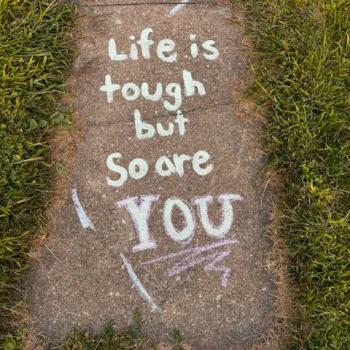I was talking to a consultant I have been working with recently and she brought up the idea of grounding with my clients. In this essay, I aim to discuss the therapeutic usefulness of grounding and specifically, the contemplative practice of centering prayer.
Therapy
I have been practicing as a therapist or minister for about twenty-seven years. In my ministerial work, I have studied contemplative prayer and lifestyle when I was considering Catholic priesthood and monasticism. As a therapist, I primarily function as a behaviorist as this was the bulk of my work for the first 10 years of my current work. In my professional training, I have covered a lot of therapeutic modalities, but for the course of this discussion, I will look at two: mindfulness stress reduction (MBSR) and eye movement desensitization and reprocessing (EMDR).
EMDR and MBSR
Established by Jon Kabat Zinn in the 1970’s, mindfulness-based stress reduction or MBSR (https://www.mindfulleader.org/what-is-mbsr ) is an evidenced based eight-week training program focused on mindfulness techniques. Zinn created the program specifically for chronically ill patients who were not responding well to traditional treatments. MBSR is designed to “train your attention to help you cultivate self-awareness, which allows you to make more fully reasoned out and wise decisions in your day-to-day life. You are invited to incorporate mindfulness into your routine, which will also help you be more aware of the present and focus on it. These strategies help you avoid rumination, either on the past or the future. You can learn to respond to stress, rather than reacting to it. You can also change your habitual reactivity patterns.”
Eye Movement Desensitization and Reprocessing or EMDR (https://www.emdr.com/what-is-emdr/ ) was established by Francine Shapiro in 1987 to alleviate the distress associated with traumatic memories such as post-traumatic stress disorder. “EMDR therapy demonstrates that a similar sequence of events occurs with mental processes. The brain’s information processing system naturally moves toward mental health. If the system is blocked or imbalanced by the impact of a disturbing event, the emotional wound festers and can cause intense suffering. Once the block is removed, healing resumes.”
It is felt that both therapeutic approaches collaborate well with grounding and centering prayer (here, I am using prayer but I am intending for a secular use in the therapy setting. I will expound on this in the next paragraph)
Centering Prayer
As noted in the previous paragraph, it says centering prayer, but for this application, it can be used both as a prayer practice or simply a spiritual practice that teaches contemplation. I have added a how to from contemplative.org and this is the standard format one would see on any site discussing this method of prayer.
I was first introduced to this practice when I was nineteen years old after my clergy mentor suggested that I begin to go to morning mass with the undergraduate seminarians at the college I was attending. My mentor had me reading contemplative works, I remember reading St. Ignatius’s story and as part of my formation work, looking into the Benedictine and Redemptorist orders and being fascinated in particular with the Rule of St. Benedict. Oddly, I would not study the rule in some depth until I was much older, when I went to seminary to become a Methodist minister.
HOW TO “DO” CENTERING PRAYER(according to https://www.contemplative.org/contemplative-practice/centering-prayer/ ):
-
-
- Find a quiet space where you are unlikely to be disturbed.
- Sit in a way that allows you to be relaxed in body and alert in mind. Use a chair, meditation cushion or prayer rug, according to your own physical needs and preferences.
- Gently close your eyes.
- “Allow your heart to open toward that invisible but always present Origin of all that exists ” (p. 6)
- Whenever you become aware of a thought, no matter what its nature, let it go.
- Use a “sacred word”.
-
This is a word or short phrase that helps you to let go of thoughts. It is a reminder of your intention to remain open to the silence. Generally sacred words fall into one of 2 categories: “God” words/phrases such as “Abba”, “Jesu, “Mary”, “Reality”, “Come Lord” or “state” words/phrases such as “love”, “peace”, “be still”. Sacred words are not used as mantras, as in constantly repeating them, but as a reminder of your intention to remain open.
-
-
- Continue this practice for 20 minutes. At the end of the time get up and go about your business, leaving the practice behind, in the same way you let go of your thoughts.
- People who are just beginning, and are particularly restless in mind and body, may find it easier to start off with shorter prayer periods, perhaps only 5 minutes per sit to start. Then after a few days extend the time to 10 minutes and so on until you are able to sit for 20 minutes. Give the practice at least 2 weeks before you decide if it is right for you.
- Two 20-30 minute sits per day are considered ideal. It is strongly recommended that no one meditates for more the 60 minutes a day unless you are attending a structured retreat with experienced leaders.
-
Grounding
In contemporary therapy spaces, you will often see something known as grounding techniques taught as a way to teach self-regulation. Grounding is a technique that helps one refocus on the present moment. It facilitates the the ability to distract oneself from anxious feelings. We will use it in therapy to help our clients deal with:
- anxiety
- well-being
- stress
- depression
- mood
- post-traumatic stress disorder (PTSD)
- dissociation
While the wording is different, grounding techniques are hand in hand cousins of centering prayer. It is very compatible with MBSR.
EMDR and Grounding/Centering Prayer
EMDR is an eight-phase therapeutic approach. According to the EMDR website noted earlier,
Phases 3-6
In phases three to six, a target is identified and processed using EMDR therapy procedures. These involve the client identifying three things:
The vivid visual image related to the memory
A negative belief about self
Related emotions and body sensations
In addition, the client identifies a positive belief. The therapist helps the client rate the positive belief as well as the intensity of the negative emotions. After this, the client is instructed to focus on the image, negative thought, and body sensations while simultaneously engaging in EMDR processing using sets of bilateral stimulation. These sets may include eye movements, taps, or tones. The type and length of these sets is different for each client. At this point, the EMDR client is instructed to just notice whatever spontaneously happens.
After each set of stimulation, the clinician instructs the client to let his/her mind go blank and to notice whatever thought, feeling, image, memory, or sensation comes to mind. Depending upon the client’s report, the clinician will choose the next focus of attention. These repeated sets with directed focused attention occur numerous times throughout the session. If the client becomes distressed or has difficulty in progressing, the therapist follows established procedures to help the client get back on track.
When the client reports no distress related to the targeted memory, (s)he is asked to think of the preferred positive belief that was identified at the beginning of the session. At this time, the client may adjust the positive belief if necessary, and then focus on it during the next set of distressing events.
It was posited in the consultation I noted earlier that EMDR would be well suited for grounding or “installing” the sacred word or phrase from the centering prayer. In my discussion with my consultant, we were talking about the mantra “Be here now” (Here, one starts with the whole phrase, repeats 3 times and starts over, dropping the last word, now. This is repeated 3 times and then the last word is dropped again, here. The sequence is started over again, this time with only the first word, be). The EMDR sequence would include bilateral stimulation after each phrase.
In an earlier phase of EMDR (Phase 2), the clinician helps the client find a safe space by focusing on a word or an image that brings the client peace and or calm. It is felt that “Be here now” could be used here as well.
You as a Spiritual Practice
Each of us is a work in progress. The spiritual practice of you causes one to focus on making themselves better. It is a contemplative practice. If however, you are in a place of emotional or spiritual unrest, you may not feel up to focusing on you. You only may be focusing on survival.
If this is the case, then the therapeutic techniques discussed in this post are for you. Therapy is a practice for you that helps heal your soul.
You do not have to suffer alone, there is help. You are a gift from God.
References:
EMDR Institute (n.d.). What is EMDR Therapy. EMDR Institute, Inc. Retrieved March 30, 2024, from https://www.emdr.com/what-is-emdr/
(n.d.). What is Mindfulness Based Stress Reduction. Mindful Leader. Retrieved March 30, 2024, from https://www.mindfulleader.org/what-is-mbsr













